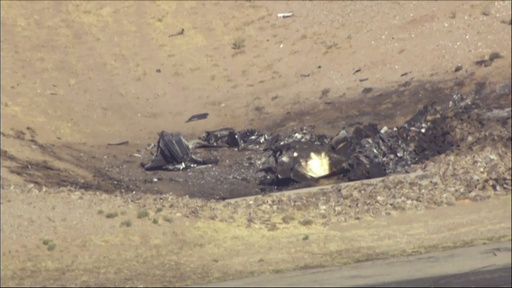
Two small aircraft collided in the skies over southern Arizona on Wednesday morning, resulting in the deaths of two individuals, according to local officials.
Federal aviation safety investigators reported that both planes had two occupants at the time of the incident near Marana Regional Airport, located just outside Tucson.
While a Cessna 172 managed to land safely, a Lancair 360 MK II crashed close to a runway and subsequently caught fire. The National Transportation Safety Board, responsible for investigating this tragic event, stated that their information is preliminary until their team fully assesses the situation.
The Marana Police Department confirmed that the fatalities occurred in one of the aircraft, and first responders were unable to provide medical aid. While specific identification of the deceased individuals has not been released, AeroGuard, the flight training school that operated the Cessna, stated that its two pilots were unharmed.
Neither of the aircraft involved in the accident were based at Marana airport, as noted by city officials. The local fire department assisted in extinguishing the fire that erupted following the crash, according to Marana police Sergeant Vincent Rizzi.
AeroGuard expressed deep sorrow over the incident, acknowledging the fatalities and sending condolences to the families affected. The company indicated that they are cooperating with the ongoing investigation but refrained from commenting on the specifics of the incident.
This collision occurred shortly after a plane crash in Scottsdale that resulted in the death of one pilot of a private jet owned by Mötley Crüe’s Vince Neil. That incident involved a plane that veered off the runway and collided with another business jet.
Moreover, this tragic event follows a spate of significant aviation incidents in North America over the past month. Notable mishaps include a Delta Airlines jet that flipped upon landing in Toronto and a commuter aircraft crash in Alaska. A particularly devastating midair collision in Washington, D.C., claimed 67 lives in late January, marking one of the deadliest aviation disasters in the U.S. since 2001. Just a day later, a medical transport jet crashed in Philadelphia, resulting in the deaths of all aboard and additional injuries to local residents.
Marana Regional Airport has two intersecting runways but operates without an air traffic control tower. A significant project to construct a control tower had been planned, but progress was stalled due to delays related to the COVID-19 pandemic. The airport supports a high volume of traffic, with tens of thousands of flights recorded each year.
Many airports across the U.S. operate without control towers, and in such airspaces, pilots communicate their landing and takeoff intentions on a designated radio frequency. Jeff Guzzetti, an airline safety expert and former investigator for the FAA and NTSB, emphasized that the lack of a control tower does not inherently present safety risks.
Guzzetti reassured that all pilots should be utilizing a common traffic advisory frequency and must share the responsibility of watching for and avoiding other aircraft to minimize collision risks.
This report has been adjusted to clarify that the total number of fatalities from the Washington, D.C., incident is 67 people, not just those aboard the American Airlines jet.

